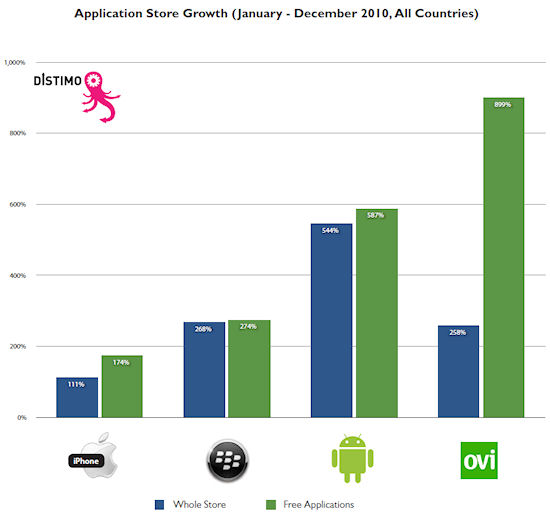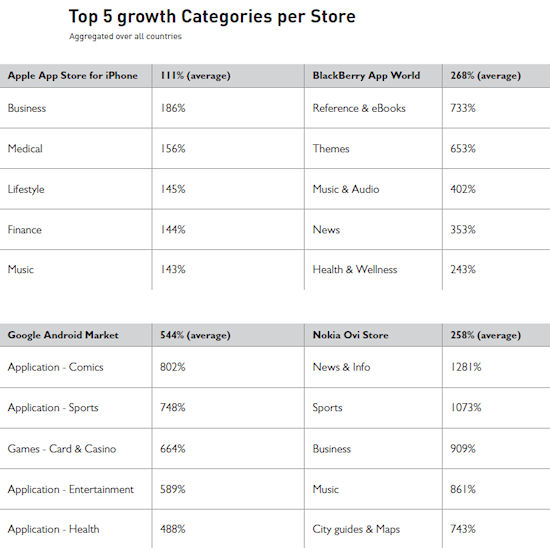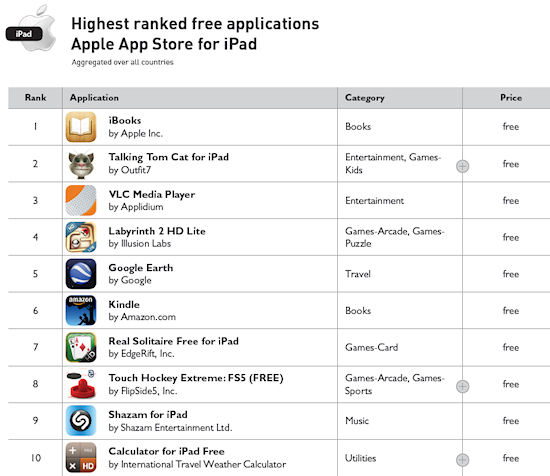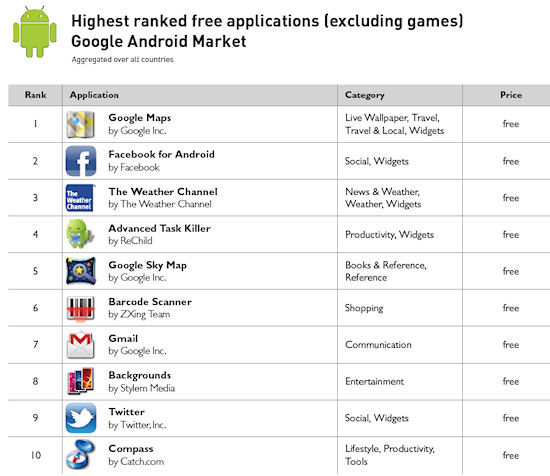Free to grow
App store analytics company Distimo has published its 2010 full year report. Among the massive growth in the number of apps in all stores, two big trends emerge: Apple's is still by far the biggest, but the others are growing faster, and: the trend is towards the development of free apps due to their far greater popularity.
Neither of these two trends are exactly a big surprise. Apple's store is more mature than the rest, so is bound to be growing slower, while the trend towards free is entirely consistent with broader trends in the digital economy.
Until recently we would have said that the trend towards free would be bad news for Apple, which operates on a more traditional ‘piece of the action' model. But the acquisition of Quattro, and the launch of iAds, means Apple is now well positioned to help publishers of free apps and games to monetise the traffic they generate and still get a piece of that action.
This, of course, is the core Google model. The search giant would presumably prefer all the apps on the Android market to be free, as it's the high-volume, ad-funded apps that provide it with its revenue. In fact we've heard it speculated that the Android market is deliberately rudimentary, to ensure most people download the top free apps.
The first chart shows the percentage growth of all apps and just free apps across the four biggest app stores last year. It must be noted that Apple still added the most apps, despite having the lowest percentage growth, because it had so many more apps at the start of the year. The end-of-year totals were: Apple - 300,000, RIM - 18,000, Android - 130,000, and Ovi - 25,000.

One other interesting trend is that productivity apps are the fastest growers on the Apple store. This implies iPhones and iPads are increasingly being viewed as productivity devices. In contrast the biggest growers for BlackBerry (and the others) are recreational apps.

We'll leave you with the most downloaded free apps of 2010 on the iPhone, iPad and Android.
















